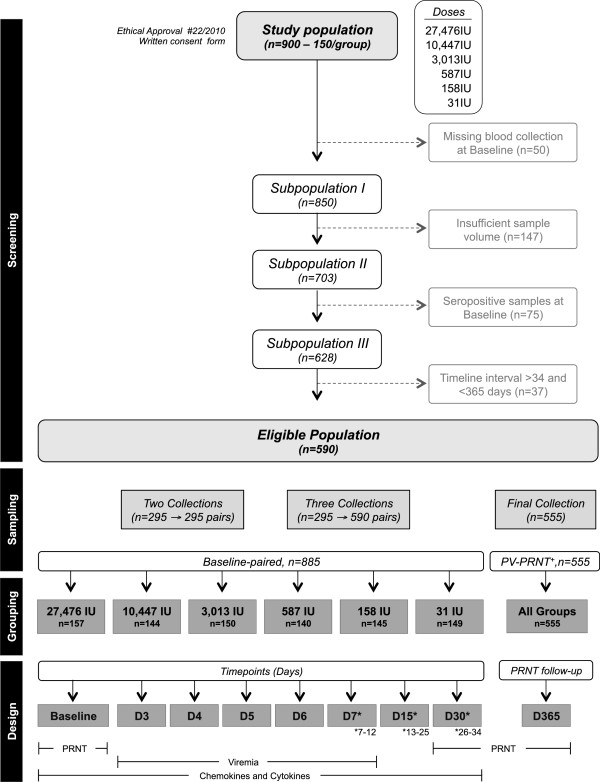Figure 1.

Flowchart illustrating the study population and experimental design. The study was organized in four phases: Screening, Sampling, Grouping and Design. “Screening” of volunteers was performed taking into account: i) missing blood collection at baseline (n = 50); ii) insufficient sample volume (n = 147); iii) seropositivity at baseline (n = 75) and iv) timeline interval of blood collection >34 days and <365 days after primary vaccination (n = 37). The eligible population comprises 590 primovaccinees. “Sampling” consisted of either two (n = 295) or three (n = 295) blood collections. The serum samples were paired to their respective sample collected at baseline, resulting in a total of 885 baseline-paired samples. “Grouping” was performed according to the dose of 17DD YF vaccine administered (27,476 IU; 10,447 IU; 3,013 IU; 587 IU; 158 IU and 31 IU). Paired samples were further subcategorized according and the timepoint (days) in which the sample was collected (Baseline; D3; D4; D5; D5; D7(7–12); D15(13–25) and D30(26–34). A final blood collection of these volunteers was taken at 365 days after primary vaccination (n = 555) to monitor anti-YF antibody status. “Design” included: i) PRNT assays performed at baseline, D30 and D365; ii) Viremia quantified at D3, D4, D5, D6 and D7 and iii) Kinetics of serum chemokines and cytokines evaluated from baseline to D30.
